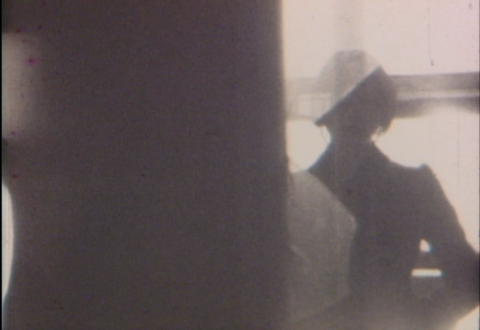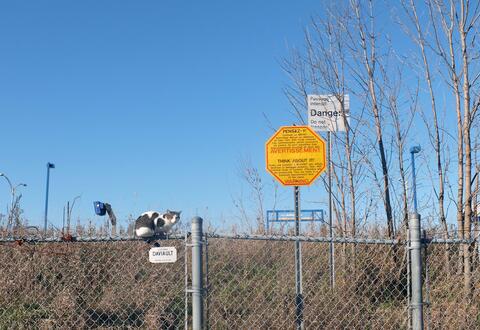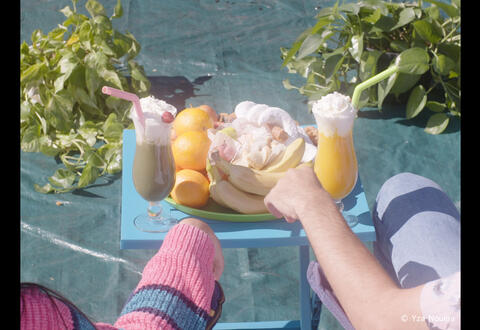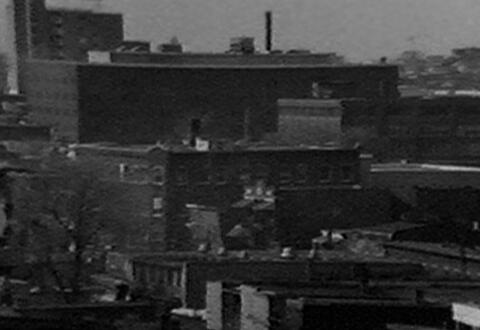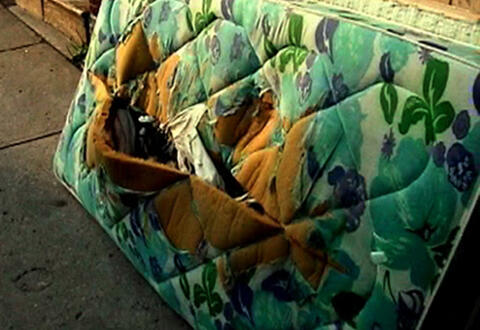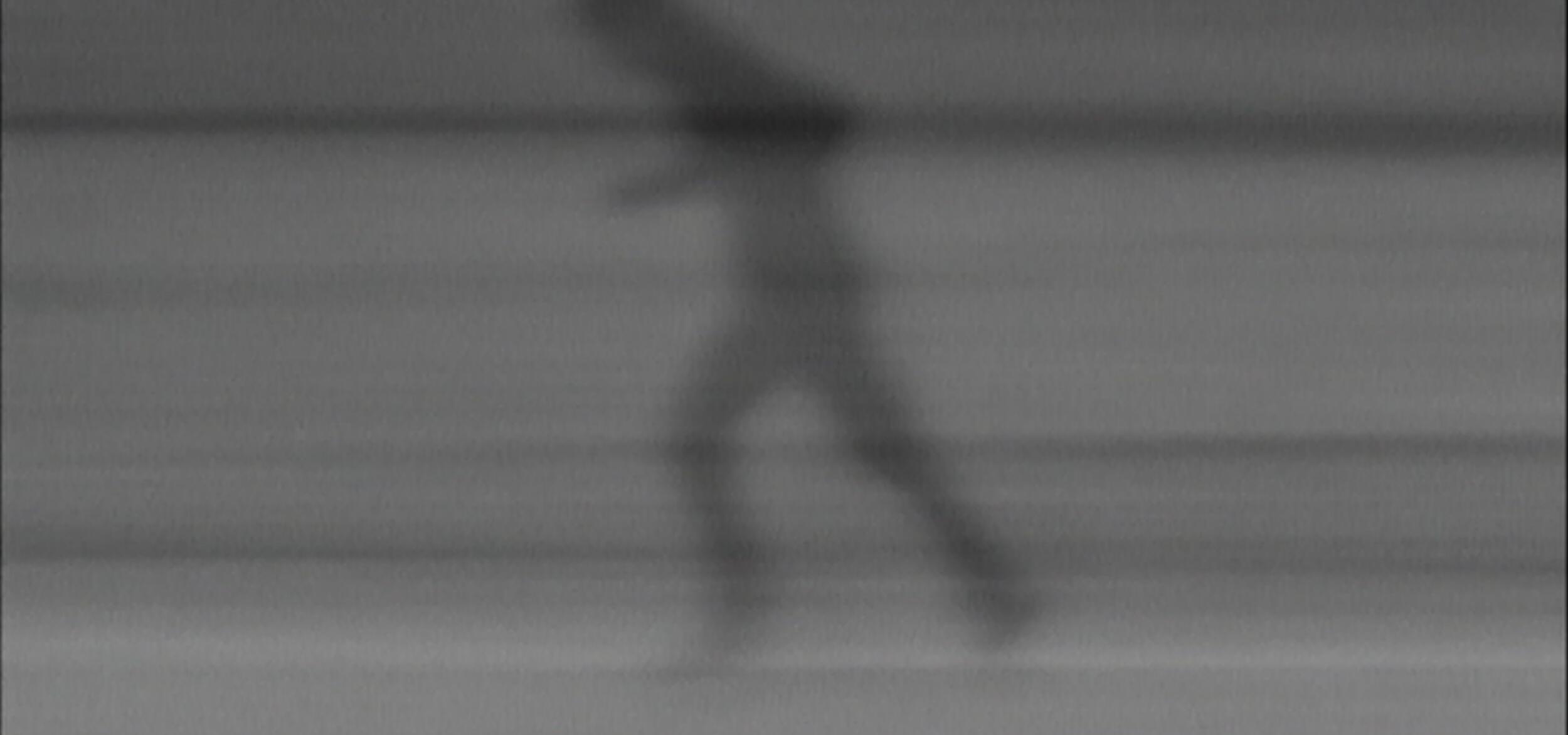
rew/ff — Altering Urban Ecologies
Altering Urban Ecologies was curated by Ylenia Olibet as part of rew/ff, Vidéographe's research and creation residency for emerging curators. This residency program is intended to support early-stage curators to develop a new project and, in so doing, acquire new skills and knowledge to enrich their practice.
Ylenia Olibet is a researcher and educator who has been based in Montréal since 2016. She is currently a postdoctoral fellow at McGill University. Her work explores how audiovisual archives can inspire social movements, with a focus on transnational and decolonial perspectives, as well as feminist and queer approaches to film culture in Francophone contexts.
List of works in program
Montreal/Tiohtià:ke’s social fabric seems particularly under pressure. In summer 2025, a proposed, for now averted, noise complaint restriction policy threatened to impose severe limits on grassroots cultural life. Summer’s heat waves exacerbate already existent social inequalities, and unsafe infrastructures compound the urban environment. The housing crisis makes living with dignity increasingly difficult for a vast number of people. Yet, alongside and against these crises, Montreal/Tiohtià:kehas witnessed powerful forms of collective response: public mobilization against the noise restrictions in July 2025, pro-Palestine demonstrations over the last two years, and the grassroots initiative Wild Pride (August 2025) resisting corporate co-optation of queer pride. These practices of contesting policies, occupying the public space, and overall reshaping its meanings reveal Montreal/Tiohtià:ke as a location where communities centre struggle and solidarity against the atomization of neoliberal individualism and potentially hold space to confront settler-colonial histories.
In this context, what can the collection of Vidéographe teach us about acts of defiance against top-down city’s design, and about reimagining urban practices? The history of Vidéographe is deeply tied to the history of Montreal/Tiohtià:ke itself. In this centre’s beginnings, “local” urban concerns were central: some of the early videos in the collection document social movements rooted in urban struggles and directly contest the spatial organization of Montreal/Tiohtià:ke. Inspired by experiments in collective struggle and the call to action of those early documentaries, the curatorial gesture behind this selection of videos aims at reanimating the potential of inhabiting the city differently.
Refusing normative understanding of urbanity, this curated program of videos foregrounds Montreal/Tiohtià:ke as an intercultural city, shaped by performative gestures and socio-cultural and political practices that disrupt the top-down, linear flows of urban design and governance. Through strategies of defamiliarization of space, of architectonic referents, of uses and visualizations of infrastructures, of waste, and narratives of contestation, the works in this program together aim at de-essentializing identitarian narrative constructions of Montreal/Tiohtià:ke. Resisting nationalist framings of the city, the program draws attention to Montreal/Tiohtià:ke as a transnational space through situated grassroots embodiments. Rather than taking identity as the primary point of entry, the program wants to foreground difference and the multiplicity of perspectives and mediated urban practices that emerge from the city. From within this framework, the program, reflecting the limitations of Vidéographe’s collection, strikingly lacks Indigenous perspectives that address colonial displacements of Indigenous people.
Although aurally the program doesn’t seem to overtly defy conventional constructions of Montreal/Tiohtià:ke as defined by English/French bilingualism, it attempts at gesturing towards the multilingualism that rather characterizes the every-day experience in Montreal/Tiohtià:ke by bringing together diverse approaches to movie-image making - from the physical manipulation of film to video-essays, to performance, to documentary, to experimental fiction. The videos in this program foreground a sensorial engagement with the city that decentralizes the modern privileged subject of modernity and their flâneries. While walking and roaming remain central as primary modes of engaging with the urban space, the emphasis shifts from the dominance of vision toward embodiments, memory’s affective force, and at times posthuman perspectives that characterize the experience of the city. In this program, sound contributes to an embodied, sensorial urban experience, prompting forms of attunement to the environment and mapping industrial geographies, infrastructures, elemental soundscapes, movements, civil engagement, and fictional flux of consciousness.
The videos in the program do not solely represent to Montreal/Tiohtià:ke; instead, they mobilize it, and are in turn mobilized, to speak to environmental and social struggles, novel productions of space, and imaginative ways of living together. Together, the videos reveal and interrogate social relations but also articulate ecological understanding of human-non/human interactions and co-constitutions in the urban environment.
Infrastructures heavily figure in the first three videos of the program inviting to an ecocritical perspective that interrupts their intended meanings and functions. In Silos, the static monumentality of Montreal/Tiohtià:ke’s Silo no. 5 is transformed into a screendance. Shot on Super 8mm, the film is physically manipulated, fragmented, and reworked, so that images of the silo drift across the screen until the referent itself dissolves into a haunted space. What emerges is a spectral atmosphere: the ghostly presence of the structure as both obsolete industrial ruin and urban heritage. The silo becomes a material trace of the city’s past that resists both functionalist narratives and nostalgic affect, while simultaneously speaking to ecological concerns. A similar haunting atmosphere pervades Drift, though through other techniques. Temporal manipulations of frontal and slanted perspectives on streets, public transportations, and buildings convey a sense of disorientation that is a prelude to slowed-down sequences that mark non-normative, non-straight, disruptive ways of inhabiting the city. In KM 0 disorientation is triggered by fragmented memories and experiences of movements and travels. By juxtaposing elemental images of different landscapes the film constructs circular rather than linear spatio-temporal geographies. The visual associative leaps refuse simplistic dichotomy of urban versus rural, conjuring instead encounters sparked by memory that attest to longer histories of diasporic movement and embodied relations with the environment.
Performative tactics of mapping space and collectively contesting its uses are at the center of the next two videos, albeit approached in very different ways. In the hyper-stylized pastel world of Jardins Paradise, the almost absurd inventiveness and stubbornness of members of the Arab diaspora as they transform a parking lot into a garden suggest inventive strategies of reappropriating public space against the spatial inequalities embedded in urban life—where one’s place of residence often determines access to services. In a very different register, the activist documentary La lutte des locataires offers an historical perspective on tenant organizing in response to Montreal/Tiohtià:ke’s housing crisis, resulting from real estate speculation and careless municipal policies. In the spirit of documentary practice as social intervention, the video centers the voices and experiences of the dwellers of the Saint-Louis neighborhood while sweeping pans across rooftops and snow-covered streets, forward-tracking shots through the quartier, and close-ups of satirical posters and vignettes provide a visual resonance with ongoing fights for affordable housing.
Jumping from the realist documentary tradition to experimental fiction, the final video in the program foreground redistributed agencies, human and non-human alike, that shape the material conditions of urban life. In Comme une ombre allongée sur l’asphalte, the encounter with abandoned mattresses on Montreal/Tiohtià:ke’s streets blurs the line between the private and the public, reinvesting public space with a sense of intimacy while simultaneously granting a form of agency to waste as active participant in urban life.






